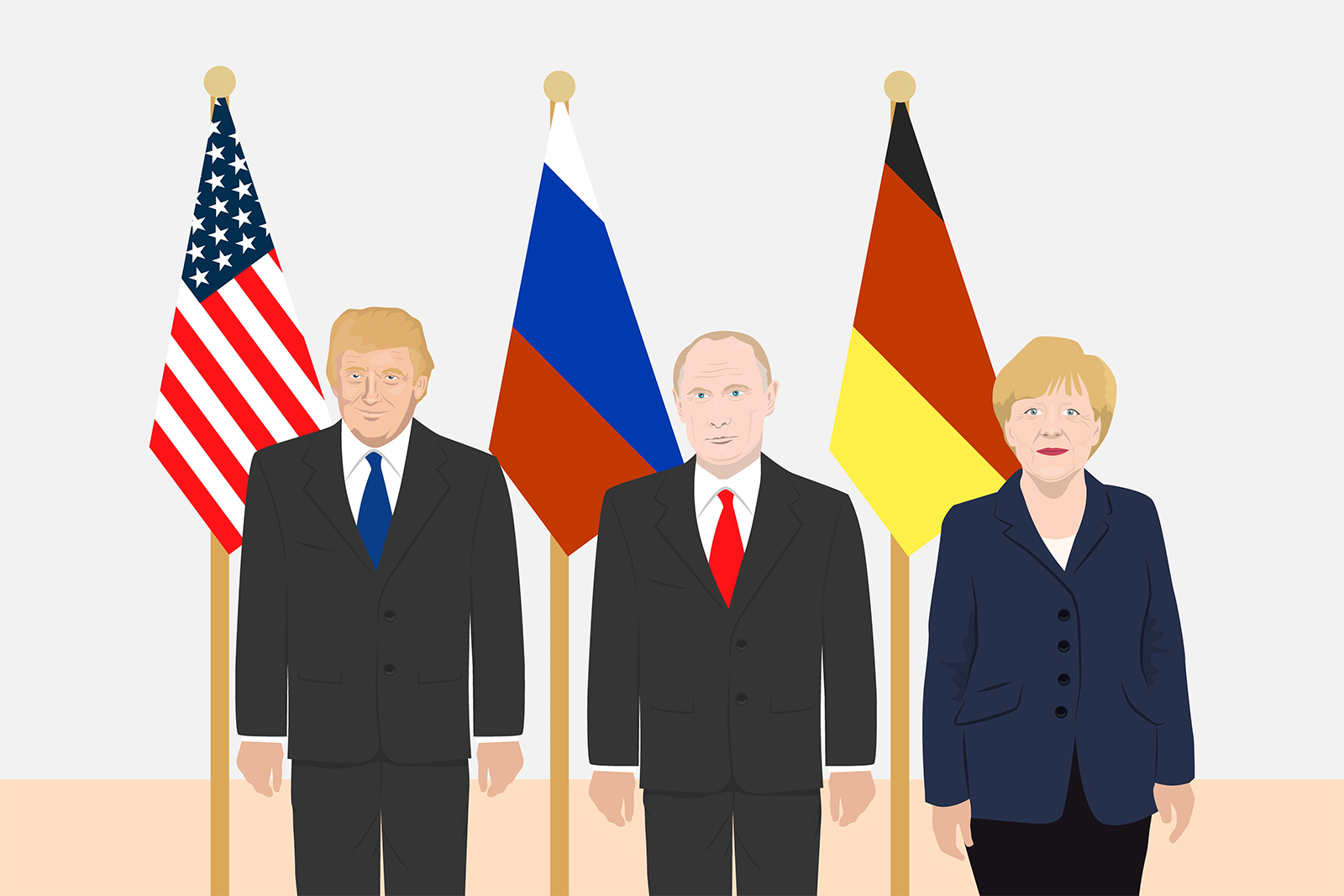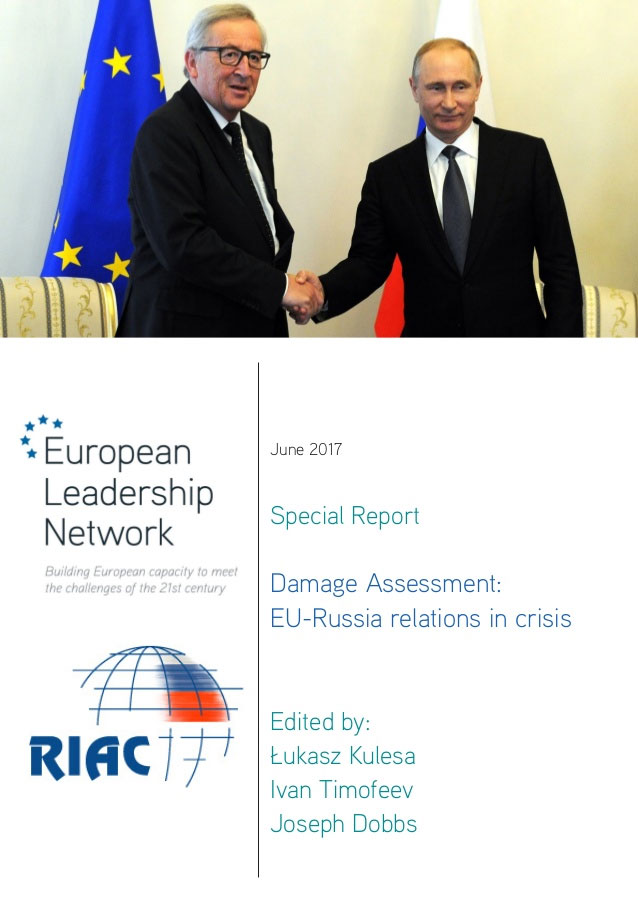Berlin’s current frustration with Warsaw is a symptom of Eastern Europe’s growing geopolitical importance. The region is attracting attention from two key global players: the United States and China. Germany is mainly concerned with Poland’s rapprochement with the United States and hostility towards Berlin.
The Polish political elite has assiduously been courting the Trump administration: his visit to Warsaw before the G20 Summit in Hamburg earlier this summer was widely seen as a sign of support for the Polish administration.
Polish demonstrations of hostility towards Berlin play at least two roles. First, they are a backlash against what is perceived to be unwarranted EU interference in Poland’s domestic affairs: following Polish attempts to increase political power over the judiciary, Brussels launched an unprecedented enquiry in 2016, and recently threatened to trigger Article 7 of the Lisbon Treaty.
Eastern Europe’s pivot towards Washington is hardly palatable not only from the perspective of Berlin, but also from that of Moscow. Growing US involvement in the region would most likely translate into increased NATO deployments along Russia’s border.
Despite these concerns, Russia is unlikely to compensate for a share of Eastern Europe’s losses, were cuts to be implemented. Moscow is cautious to limit the amount of resources it dedicates to the region, as shown by the stalemate in the Ukraine.
The Chinese have been eying Eastern Europe in the context of their One Belt One Road project. In order to be a reliable transit route for Chinese goods to comparatively rich Western European markets, the region must remain politically stable. Otherwise, the Chinese would face considerable difficulties in implementing their continental Silk Road.
Eastern Europe’s geopolitical importance is on the rise. The Germans are wary of Poland’s geopolitical aspirations and rapprochement with the United States. For net contributors to the EU, plans for a two-speed Europe are on the table. The Chinese are eyeing deeper involvement in the region to guarantee a stable transit zone for their goods. Current lashes against Poland over legal reforms are but the first gusts of a coming storm.
Berlin’s current frustration with Warsaw is a symptom of Eastern Europe’s growing geopolitical importance. The region is attracting attention from two key global players: the United States and China. Germany is mainly concerned with Poland’s rapprochement with the United States and hostility towards Berlin.
With Brexit on the table, Poland has views to replace Britain as Washington’s main EU ally.
The Polish political elite relies on American military support against Russia, in particular through NATO, and seeks to use a closer partnership with the United States to diversify its energy sources; the first shipment of Liquefied Natural Gas from the United States arrived in June 2017. Poland had been a leader in the campaign against the Nord Stream 2 project, which is set to supply Germany with natural gas directly from Russia. Nord Stream 2 would undermine American efforts to tease Gazprom out of its European market. Furthermore, Poland’s elite is currently probing American support for its project to engineer greater energy and defence cooperation in Eastern and Central Europe, for example though the Three Seas Summit initiative.
The Polish political elite has assiduously been courting the Trump administration: his visit to Warsaw before the G20 Summit in Hamburg earlier this summer was widely seen as a sign of support for the Polish administration. Polish Defence minister Antoni Macierewicz hailed the American President’s visit as a demonstration that Poland’s geopolitical position has greatly improved.
Certain American
and German
news outlets subsequently interpreted President Trump’s visit to Warsaw as a move against Germany and the EU.
Polish demonstrations of hostility towards Berlin play at least two roles. First, they are a backlash against what is perceived to be unwarranted EU interference in Poland’s domestic affairs: following Polish attempts to increase political power over the judiciary, Brussels launched an unprecedented enquiry in 2016, and recently threatened to trigger Article 7 of the Lisbon Treaty. These moves, supported by Germany, were met with hostility by Poland’s ruling party. Second, hostility towards Berlin is an additional way to demonstrate Poland’s alignment with the Trump administration. Possible demands of German war reparations, for example, may be interpreted in at least these two ways. First, they may be seen as a backlash against Germany’s criticism of Polish legal reform attempts. Second, if the demands were to be implemented, these reparations would contribute to Germany’s economic weakening - in lines with Trump’s foreign policy.
The Polish anti-German vector is moreover bothersome for Berlin because on Germany’s other flank, President Emmanuel Macron is reaching out towards Washington to develop a cordial relationship. Earlier this summer, Macron invited President Trump on a personal visit to France for Bastille Day. Germany, which is experiencing tensions with the United States, finds itself caught between two neighbours looking increasingly towards Washington and in one case more obviously than in the other, away from Berlin.
Warsaw’s legal reforms provide a window of opportunity for Berlin to lash at its neighbour, without overtly addressing its geopolitical concerns.
Berlin vs. Warsaw: a two-speed Europe on the move?
A number of European elites are critical of 2004 expansion to Eastern Europe. Indeed, Eastern European member states constitute a considerable investment from net contributors to the EU budget: between 2014 and 2020, Poland alone will receive around 100 billion euros from Brussels. Earlier this year, Germany proposed a bill to link EU funding to the respect of democratic principles and human rights. The proposal, which could potentially affect funding for Poland and Hungary, was blocked
by the president of the European Commission Jean-Claude Juncker. Though it has been placed on hold for now, the legal project may well be taken up anew when Juncker retires from his position in 2019.
The existence of such a legal project is directly related to structural economic difficulties in the EU, which are unlikely to be solved. With economic resources running low, stripping Poland of its voting rights by triggering the Article 7 process may be another path to achieve a similar end: a two-speed Europe with reduced, conditional economic support for its periphery. If successful, such methods could be expanded to other member states, for example Hungary.
Eastern Europe on the margin: drawing in the Chinese
Numerous infrastructural and other economic projects in Eastern Europe depend on EU funding. Were the latter to decrease, the region would likely suffer an economic downturn with considerable risks of social unrest and political instability. Such a development is in the interest neither of Germany nor of Russia.
Eastern Europe’s pivot towards Washington is hardly palatable not only from the perspective of Berlin, but also from that of Moscow. Growing US involvement in the region would most likely translate into increased NATO deployments along Russia’s border. Additionally, American liquefied gas providers are looking into Eastern Europe as a new market which would welcome diversification from Russian gas. European funding cuts would stimulate Eastern Europe’s pivot toward the US, a move at odds with Russian interests.
Despite these concerns, Russia is unlikely to compensate for a share of Eastern Europe’s losses, were cuts to be implemented. Moscow is cautious to limit the amount of resources it dedicates to the region, as shown by the stalemate in the Ukraine. Burdened by sanctions, Russia has neither the economic capacity nor the political will to finance Eastern European economies. To avoid a severe degradation in the stability of Eastern Europe, which would be against the interests of both Berlin and Moscow, Germany and Russia, along with net EU contributors such as France, would most certainly like to pass the burden of funding Eastern Europe elsewhere.
The Chinese have been eyeng Eastern Europe in the context of their One Belt One Road project. In order to be a reliable transit route for Chinese goods to comparatively rich Western European markets, the region must remain politically stable. Otherwise, the Chinese would face considerable difficulties in implementing their continental Silk Road. A failure of this initiative would not only be a blow on the international level, but also on the domestic level for Xi Jingping. The Chinese may therefore be interested in compensating for EU funding cuts if these cuts were severe enough to create a high risk of political degradation in Eastern Europe.
Where does this leave us?
Eastern Europe’s geopolitical importance is on the rise. The Germans are wary of Poland’s geopolitical aspirations and rapprochement with the United States. For net contributors to the EU, plans for a two-speed Europe are on the table. The Chinese are eyeing deeper involvement in the region to guarantee a stable transit zone for their goods. Current lashes against Poland over legal reforms are but the first gusts of a coming storm.







